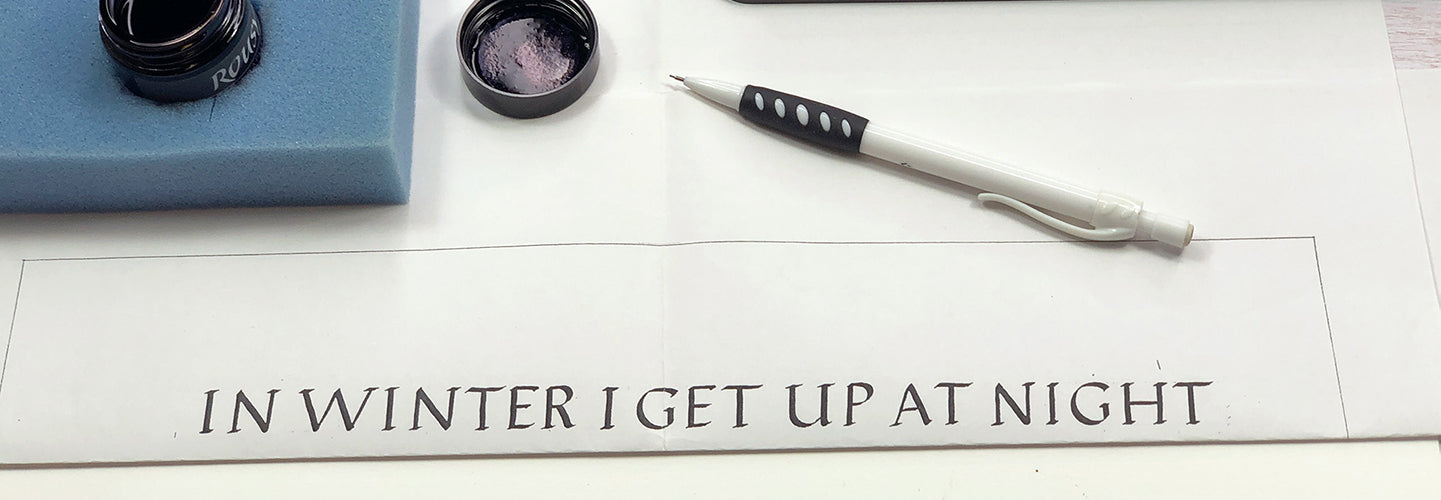
Calligraphy Projects - Planning for Success
Things going wrong – it happens. It’s part of developing our calligraphy. And it’s not the end of the world.

This article is going to look at ideas for reducing the chances of something going wrong. Of course it’s not good for our calligraphy if we proceed assuming everything will go wrong, but a few simple precautions can make life easier in the event of a problem.
Set up your workspace safely. Think about ways to reduce the chance of spills – of water and ink and wet pens and brushes. Have a pen stand (even a crumpled piece of paper will work) and think about making your ink anti-spill – cutting a hole out of a bath sponge and inserting the whole bottle into the sponge makes it more stable and catches drips too.

Use good materials. You have more options available to you if you have used good paper and an ink/paint that does not soak in. (Gouache Paints for example sits on top of the paper, making the scratching off of a rogue letter more possible.)
Plan what to do first. As you work on a final piece with multiple elements (such as the text, an illustration, a title) if you can add the elements that you find most difficult first, then you will be more relaxed as you get closer to finishing. Of course we don’t always have the option to do this.
Make it easy to see what you’re writing. Have the words you’re writing right next to the sheet you’re lettering on. A good tip both for accuracy of the words and correct spacing is to use the final rough to guide you,: as you write a line you have your own lettered version just above or below where you’re writing. (Careful not to smudge wet ink though).

Always check back to the original. There is a danger that if you made an error the first time you wrote the words, you will then repeat that error in every trial and on into your final piece. Take the time to check that you’ve not accidentally drifted away from the original words.
Get someone to check for you. Consider asking someone to check your final rough – have you correctly copied the words from the original text?
Let it dry. It’s easy to spoil a piece by putting your hand on ink that’s still damp, or rubbing out lines before everything is bone dry. Be patient – better to wait overnight before rubbing out lines.
This list will probably prompt you to think of other ways in which you can increase your chances of creating a beautiful piece.
And sometimes we can be as careful as you like, and still something occurs…
